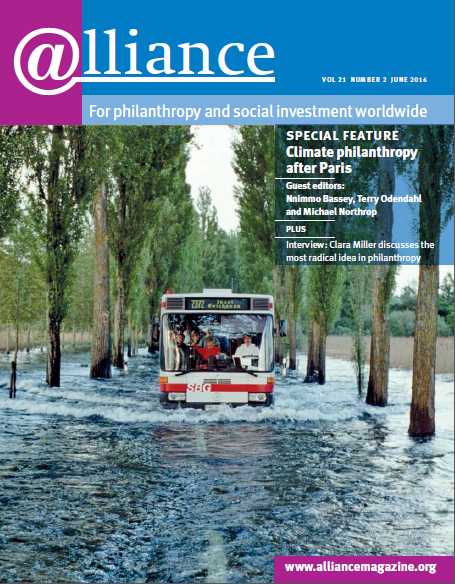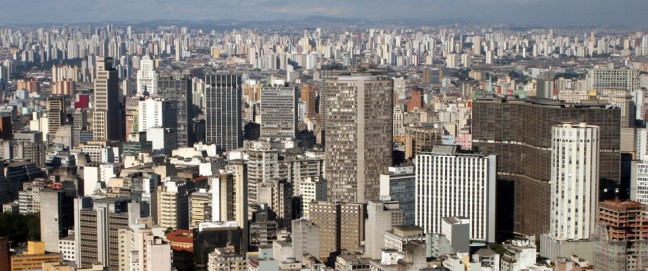Everybody knows about the Paris Agreement, but what many don’t know is that cities played a crucial role in making it happen. Around 450 mayors from five continents gathered at the Climate Summit for Local Leaders at Paris City Hall on 4 December to pledge ambitious climate change measures. UN secretary general Ban Ki-moon, UN Framework Convention on Climate Change (UNFCC) executive secretary Christiana Figueres and many other key figures recognized the central role of cities in reducing aggressive greenhouse gas (GHG) emissions and encouraging bolder national and international action. And in April 2016, the Intergovernmental Panel on Climate Change (IPCC) voted to include a major new focus on cities in all of its research in the coming decade.
Cities are essential to combatting climate change. They are home to more than half of humanity, and are responsible for three-quarters of humanity’s GHG emissions worldwide. They are also on the frontlines of climate change: floods, droughts and extreme weather events are felt and dealt with locally. Local decision-makers are much more able to enact change quickly and efficiently. As Pope Francis said in his May 2015 encyclical on ecology and climate change: ‘Climate change calls on societies to act quickly and cities tend to be more nimble than national governments.’
‘Averting the worst impacts of climate change will require us to cut GHG emissions by at least 80 per cent by 2050. Most of this will need to happen in cities.’
Averting the worst impacts of climate change will require us to cut GHG emissions by at least 80 per cent by 2050. Most of this will need to happen in cities. There’s general agreement that mid-term goals of 20-30 per cent reductions can be achieved in cities through incremental improvements in municipal building, energy, transportation, land use, water and waste systems. However, achieving the 80 per cent GHG reduction we need to see by 2050 will require a fundamental redesign of core urban systems, requiring us to reimagine and reinvent our cities entirely.

Around 450 mayors from five continents gathered at the Climate Summit for Local Leaders at Paris City Hall. Credit: Compact of Mayors.
It will mean completely re-envisioning and redoing our urban buildings, energy supply, transportation and waste systems and it will involve the entire ‘city ecosystem’: local government, the private sector, citizens, technology providers, private investors and the philanthropic community. And it’s going to require very thoughtful approaches to make sure everyone – including at-risk communities, which are often left out of the conversation, or at least not engaged meaningfully – benefit from the transition to a zero-carbon future.
The good news is that cities are getting serious about doing something about it. The cities that make up the Carbon Neutral Cities Alliance, for example, have committed to working to cut GHGs by 80 per cent or more by 2050 or sooner. Many of them are already demonstrating significant reductions. In Sydney, Australia, between 2006 and 2012, GHG emissions decreased by 12 per cent while population increased by 16 per cent and gross domestic product (GDP) grew by 23 per cent. In Portland, Oregon, GHG emissions have fallen by 14 per cent since 1990, while population has increased by 31 per cent and jobs by 20 per cent. Copenhagen, Denmark has decreased GHG emissions by 31 per cent since 2005, while its population has increased by 15 per cent and the local economy has grown by 18 per cent.
‘Many of the most innovative approaches to urban decarbonization have been enabled by philanthropic grants and investments.’
Many of the most innovative approaches to urban decarbonization have been enabled by philanthropic grants and investments. Innovative programmes for financing clean energy retrofits in residential and commercial buildings, such as Property-Assessed Clean Energy (PACE) programmes, were tested and brought to commercial viability through grants from foundations. Foundations have often underwritten the risks associated with testing the development and implementation of groundbreaking local policies for getting to zero waste, zero net-emission buildings and decarbonized transportation systems. And much of the work currently being undertaken in local communities around the world to facilitate a just transition to clean and renewable energy systems is being made possible through philanthropic support.
Philanthropy is also enabling virtually all of the key networks that exist to support cities in their transition to low-carbon futures, such as the Carbon Neutral Cities Alliance, the Urban Sustainability Directors Network, the Compact of Mayors, United Cities and Local Governments, C40 Cities Climate Leadership Group, ICLEI Local Governments for Sustainability and others, without which there’d be a lot more reinventing of the wheel in cities’ GHG reduction efforts.
‘At present only about 100 cities globally – out of about 50,000 – have committed to and are actively pursuing carbon neutrality.’
But cities and philanthropy are going to have to step up their efforts in a significant way to enable the kind of change we need to see to stay below 2°C – and certainly 1.5°C –globally. While 195 countries have signed on to the landmark Paris agreement, there is a significant gap between the GHG mitigation pledges that these countries have made and the actual reductions needed to stay below that target. That is why deep GHG reductions at the local level are so critical. At present only about 100 cities globally – out of about 50,000 – have committed to and are actively pursuing carbon neutrality. This number will need to increase to the thousands to make significant global progress, and they’ll need a lot of help doing it.
‘The science tells us we only have 34 years to completely decarbonize – this means that every investment decision we make from now onward will directly either enable this or prevent it. Period. We can’t kick the can down the road any longer.’
To catalyse this change, the philanthropic community has a responsibility to be hard-nosed in its support for deep and sustained efforts towards decarbonization. The urgency of getting to carbon neutrality by 2050 no longer permits the luxury of investing in incremental efforts that don’t pave the road to carbon neutrality. Don’t get me wrong: progress is made by setting ambitious goals and then taking the incremental steps needed to get there. However, our goals need to be bolder and our incremental advances need to be bigger and happen more rapidly. The science tells us we only have 34 years to completely decarbonize – this means that every investment decision we make from now onward will directly either enable this or prevent it. Period. We can’t kick the can down the road any longer.
‘The philanthropic community also needs to help decarbonize our cities in a way that benefits every member of society, including at-risk communities.’
The philanthropic community also needs to help decarbonize our cities in a way that benefits every member of society, including at-risk communities. This is absolutely critical, and it can be done, but it requires special focus and attention to make it happen. Time and time again, it’s been shown that transformation that is designed inclusively, intentionally and smartly will lead to a better system design. A growing number of philanthropic leaders recognize this as a core value, and are applying this thinking to everything in which they invest. Deep GHG reductions work should be no different.
For example, the Kresge Foundation, which seeks to ‘address society’s most intractable problems’, has made strategic investments in global urban decarbonization initiatives. It sees these not only as climate solutions, but as catalysts for new models of economic prosperity, social equity and enhanced quality of life – models that place people and communities first in a new era of climate balance and resilience.
‘In my 25 years of climate and clean energy work, I’ve never felt more sure, nor been more optimistic, about the groundbreaking work happening in cities, much of which has been enabled by philanthropy.’
The next few years will be absolutely critical in determining whether we as a global community shift towards the necessary carbon-neutral future, or fall into the outdated inertia of unambitious efforts that lock us into a passive future.
The challenge before us is significant. But in my 25 years of climate and clean energy work, I’ve never felt more sure, nor been more optimistic, about the groundbreaking work happening in cities, much of which has been enabled by philanthropy. There is an unprecedented opportunity and international momentum created by the Paris Agreement. Let’s embrace it and make it happen.
Johanna Partin is director, Carbon Neutral Cities Alliance. Email johannapartin@usdn.org







Comments (0)